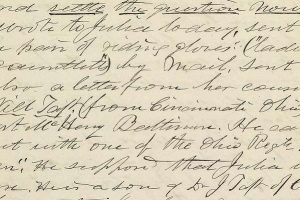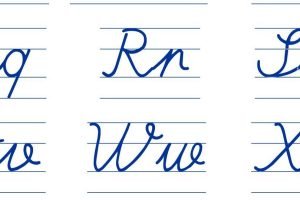The History and Evolution of Cursive Writing
Cursive writing has been around for centuries, with its roots tracing back to ancient Greece. It was originally developed as a way to write quickly and efficiently, and it has evolved over time to become a form of artistic expression. In the 18th and 19th centuries, cursive writing became a standard part of education in many countries, and it remained a common writing style until the advent of digital communication.
The Basics of Cursive Alphabet
Cursive writing involves a flowing, connected script that is created by joining letters together. The cursive alphabet consists of 26 letters, each with a unique form that must be learned in order to write in cursive. The letters in cursive are generally written with a slight slant and a consistent spacing between them.
The Advantages of Writing in Cursive Alphabet
Writing in cursive alphabet has several advantages. First and foremost, it can help improve penmanship and hand-eye coordination. It also encourages the use of fine motor skills, which can be beneficial for individuals with learning disabilities or neurological conditions. Additionally, writing in cursive can be a way to express oneself creatively, as the flowing script allows for a more personalized and artistic approach to writing.
How to Improve Your Cursive Writing Skills
Improving your cursive writing skills takes practice and patience. Begin by learning the cursive alphabet and practicing each letter individually. Once you have mastered each letter, start practicing joining them together to form words and sentences. It is important to maintain a consistent slant and spacing between letters, as this will help your writing look neat and legible.
The Role of Cursive Writing in Today’s Digital Age
With the rise of digital communication, cursive writing has become less common in everyday life. However, it still holds a valuable place in society, particularly in formal and artistic contexts. Many legal documents, such as contracts and wills, must be signed in cursive. Additionally, calligraphy and other forms of artistic writing often utilize cursive scripts.
Conclusion
Writing in cursive alphabet is a beautiful and timeless form of communication that has been used for centuries. While it may not be as common in today’s digital age, it still holds an important place in education, personal expression, and formal settings. By learning and practicing cursive writing, individuals can improve their handwriting, fine motor skills, and creativity.









Add Comment